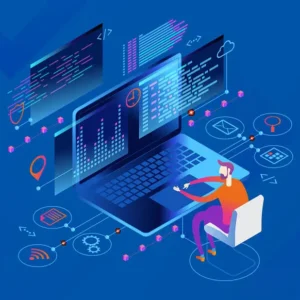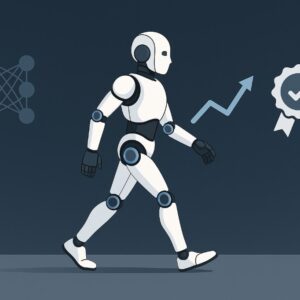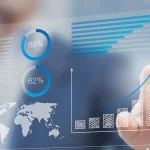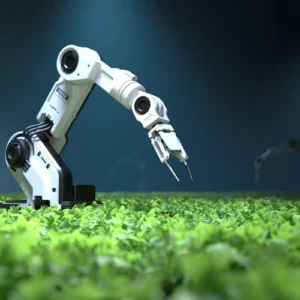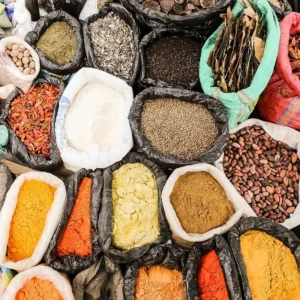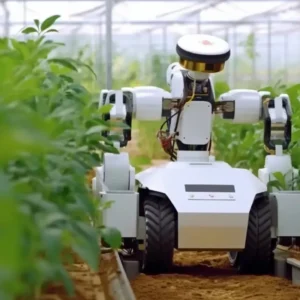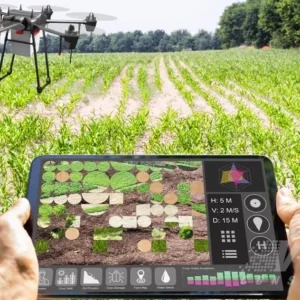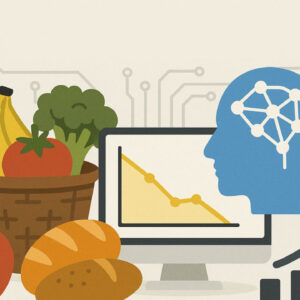The evolution of food inspection is upon us, and AI-based solutions are leading the charge towards a new era of quality control. Traditional manual checks are being replaced by intelligent, automated systems, offering unprecedented speed and accuracy. This innovative approach ensures that every aspect of the food production process is scrutinized with an unparalleled level of detail.
AI-based food inspection systems bring a fresh perspective to quality and safety, offering a scalable solution that adapts to the ever-changing needs of the industry. By harnessing the power of machine intelligence, we can revolutionize the way we ensure the safety and integrity of our food supply. This innovative technology is set to transform the landscape, providing an efficient and reliable method for maintaining the highest standards.
Revolutionizing Food Safety: The Future is Here
The traditional methods of food inspection are facing a critical juncture. Human-based inspections, though essential, have their drawbacks. Inconsistencies arise due to varying expertise and subjective judgment, leading to potential risks. Fatigue can also affect the accuracy of inspections, and human error is an ever-present concern. These limitations put the quality and safety of our food at stake.
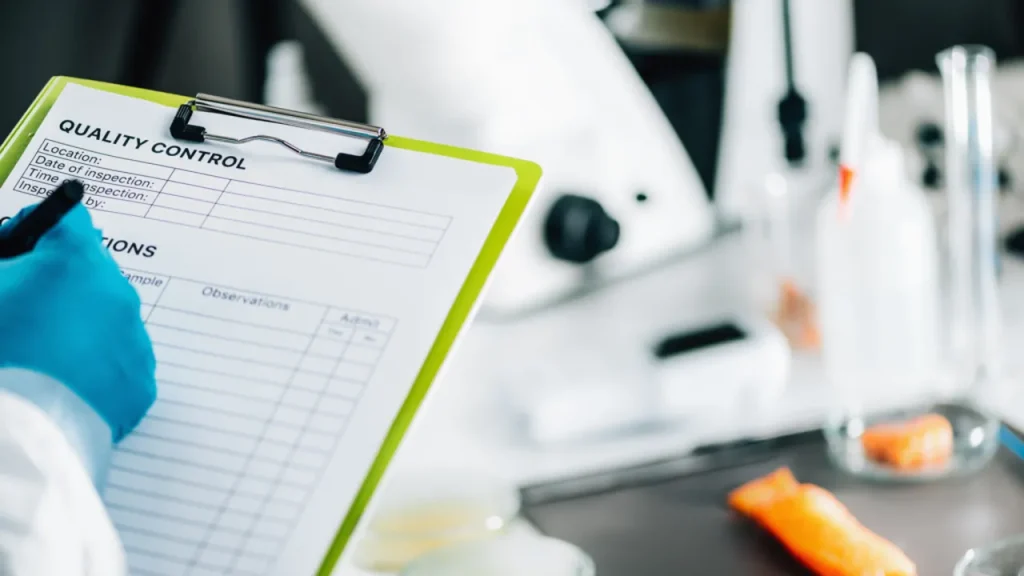
The costs of recalls, contamination, and food waste are significant, both financially and reputationally. Thus, there is a pressing need for innovative solutions. AI-based food inspection offers a promising approach, providing consistent, accurate, and efficient monitoring, ensuring our food is safe and of the highest quality. It’s time to embrace this technological advancement for a brighter and healthier future.
AI’s Impact on Food Inspection
The implementation of AI-based food inspection systems has revolutionized the way we ensure food safety and quality. These advanced technologies, including computer vision and sensor fusion, have enabled us to detect a wide range of defects in food products and their packaging. With AI’s powerful capabilities, we can now identify both visual and non-visual anomalies, ensuring a thorough inspection process.
From detecting surface and structural defects to identifying microbial and chemical contaminants, AI has become an invaluable tool in maintaining the highest standards of food quality. By leveraging AI-based food inspection, we can enhance our ability to safeguard public health and deliver exceptional food products to consumers. AI-based food inspection is truly a game-changer, offering an efficient and accurate approach to food quality control.
Enhancing Food Inspection: AI’s Visionary Approach
AI-based food inspection is a game-changer, employing computer vision technology to ensure real-time quality control. This advanced system trains models to identify various issues, such as mold, bruises, discoloration, and deformities with exceptional precision. By utilizing high-speed cameras and edge AI on processing lines, the technology captures and analyzes every detail, guaranteeing an efficient and thorough inspection process. With its ability to detect even the slightest imperfections, this innovative approach revolutionizes the food industry, ensuring consumer safety and maintaining high standards. AI-based food inspection is a powerful tool, offering an accurate and reliable solution for quality control.
AI’s Role in Fresh Produce and Meat Grading
The implementation of AI-based food inspection systems has transformed the way fresh produce and meat are graded and processed. With advanced imaging technologies, these intelligent systems can accurately detect and analyze the quality of apples, tomatoes, and leafy greens at an unprecedented scale. The precision imaging capabilities of AI allow for the identification of fat content and marbling in meat, ensuring consistent quality control. This innovative approach not only enhances efficiency but also reduces the risk of human error, revolutionizing the food industry. By embracing AI-based inspection, food manufacturers can ensure superior product quality and consumer satisfaction.
Food Sorting Improvements: The Power of AI and Robotics
The fusion of AI and robotic arms creates an innovative approach to food inspection and sorting. This advanced technology allows for the swift removal of defective items with incredible precision and speed, all within milliseconds. Vision-guided pick-and-place systems, controlled by AI, can sort produce based on various factors such as ripeness, size, and overall quality. This AI-based food inspection ensures a more efficient and accurate process, revolutionizing the way food is handled and sorted. With this technology, we can guarantee an exceptional level of quality control, enhancing the overall consumer experience.
Unveiling the Secrets of Deep Learning
The world of AI-based food inspection is powered by sophisticated deep learning models. These models are the hidden heroes behind the scenes, ensuring accurate and efficient inspections. One such model is the Convolutional Neural Network (CNN), which is an expert in image classification, analyzing visual data with precision. Additionally, real-time object detection is made possible through advanced techniques like YOLO (You Only Look Once), SSD (Single Shot MultiBox Detector), and Mask R-CNN. These models, with their intricate architectures, enable the swift identification of objects, making them invaluable for food inspection systems. The application of AI-based food inspection showcases the power of these models, revolutionizing the way we ensure food safety and quality.
The Challenges are Ahead
The implementation of AI-based food inspection systems presents an array of challenges, but with the right strategies, these hurdles can be overcome. One key issue is data labeling, which requires meticulous attention to detail to ensure accurate classification. Furthermore, the variability of food items and the potential for class imbalance pose significant obstacles. Lighting conditions, line speed, and environmental factors must be carefully calibrated on production lines to optimize the performance of AI inspection systems. By addressing these challenges head-on, we can unlock the full potential of AI-based food inspection, revolutionizing food safety practices and ensuring consumer well-being.
Revolutionizing Food Safety and Reducing Waste: Enhance Productivity and Reduce Costs
In today’s food industry, AI-based food inspection is an advanced technique, offering a myriad of advantages beyond ensuring product safety. By employing advanced AI technologies, businesses can achieve remarkable cost savings and efficiency gains, revolutionizing their operations.
AI-based screening allows for precise and rapid identification of potential issues, reducing product waste significantly. This technology enables faster processing and less reliance on manual labor, thus streamlining the entire supply chain. The benefits of AI-based food inspection are vast, from enhanced productivity to reduced costs, all while maintaining the highest standards of food safety. It’s an innovative approach that transforms the way we ensure the quality and integrity of our food products.
Revolutionizing Food Safety: The Power of AI Inspection
In today’s world, ensuring food safety is paramount, and the development of AI-based inspection systems is a game-changer. For those with a technical inclination or entrepreneurial spirit, building your own AI inspection system offers a unique opportunity. This process involves a meticulous workflow, starting with the collection of domain-specific image datasets. These datasets, carefully annotated, provide the foundation for training robust models. The models can then be deployed on edge devices or cloud platforms, offering a seamless and efficient inspection process.
This innovative approach to food inspection not only enhances safety but also revolutionizes the way we ensure the quality of our food. With AI-based food inspection, the possibilities are endless!
AI’s Impact on Regulatory Compliance
In the dynamic world of food safety, AI-based food inspection stands as a powerful way, ensuring compliance with global regulations. This innovative technology meticulously aligns with the stringent standards set by bodies like the FDA, HACCP, and ISO 22000. By employing AI logs, these organizations can confidently meet the highest standards, guaranteeing the safety and quality of our food. AI’s ability to trace and track every step of the food production process provides invaluable data for audits and quality reports, revolutionizing the industry. With AI’s precision and efficiency, the future of food safety is brighter and more secure than ever before.
The Power of Predictive Inspection: The Integration of IoT and Blockchain
The world of food inspection is rapidly evolving, with AI-based technologies at the forefront. By seamlessly integrating AI with the Internet of Things (IoT), we unlock a new era of continuous and predictive inspection. This innovative approach ensures a thorough and efficient monitoring system, revolutionizing the way we ensure food safety.

With AI-based food inspection, the industry can embrace emerging trends and technologies. The potential for verified food traceability through blockchain integration is immense, providing an unprecedented level of transparency and accountability. Get ready to embrace the future of food safety, where AI-powered solutions lead the way!
Adaptability And Precision: Hyperspectral Imaging and Chemical Markers
The world of food safety is undergoing a remarkable transformation with the integration of AI-based food inspection systems. These innovative technologies utilize hyperspectral imaging and advanced analytics to detect microbial contamination without any physical contact with the food. By analyzing chemical markers, AI algorithms can identify potential hazards, ensuring a safer and more efficient food supply chain.
The beauty of AI-based food inspection lies in its adaptability and precision. With on-premise inspection models, businesses can leverage edge devices such as NVIDIA Jetson or Intel Movidius to run low-latency AI processes locally. This enables real-time monitoring and quick decision-making, enhancing overall food safety protocols.
Imagine a future where AI-based systems revolutionize the way we ensure food safety, offering a fresh and efficient approach to protecting public health.

